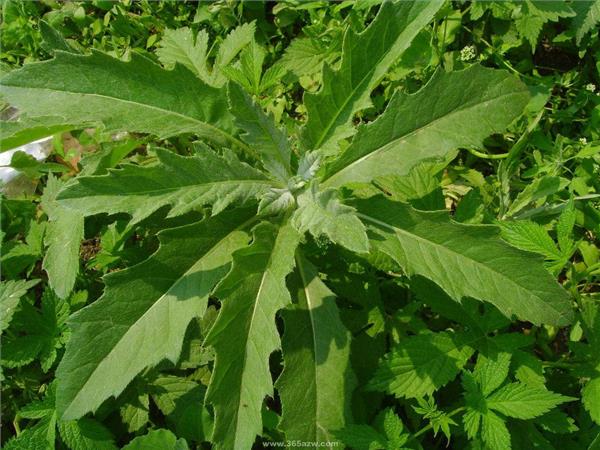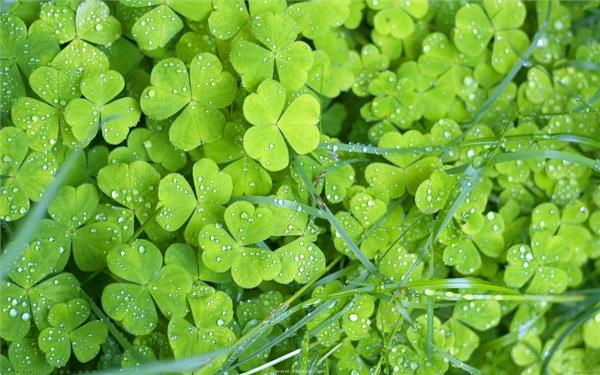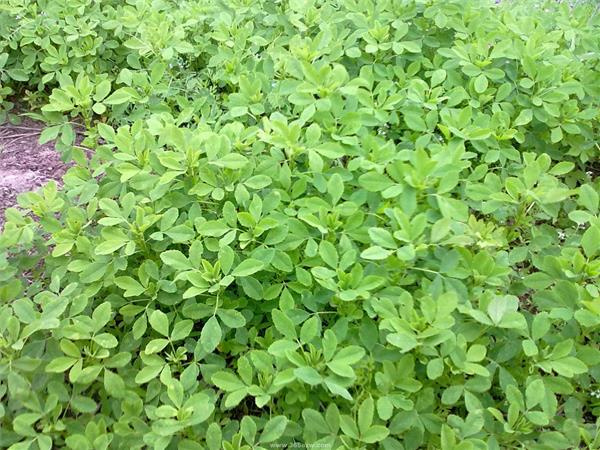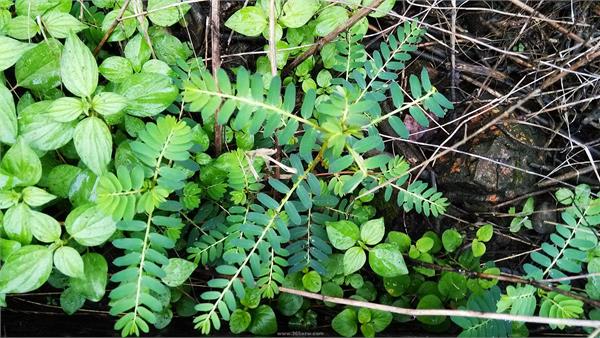A detailed introduction to the function and classification of herbaceous plants
The vascular bundles of herbaceous plants are also different from woody plants. Let's take a look at the functions and taxonomic details of herbaceous plants.

A detailed introduction to the function and classification of herbaceous plants
Main role
1. Herbaceous plants have many uses. All important grains are herbaceous plants, such as wheat, millet, corn, barley, sorghum, rice and so on, which can be used for human consumption.
2. Many animals in nature, as well as pigs, cattle, horses, sheep and other livestock also eat herbs, so herbs are an important part of the food chain.
3. Some herbs can be found everywhere in daily life and can be used in making and making appliances, as well as houses made of bamboo in Southeast Asia.
4. Many grasses in nature are not only food for animals, but also produce a lot of oxygen to prevent soil erosion.
5. Many herbs are important sources of traditional Chinese medicine.
Side effect
If a product uses words such as "natural" and "herbal", it seems to make people feel safe. In fact, this is not always the case. Examples abound. For example, tobacco leaves, coca leaves (source of cocaine), cannabis (source of cannabis ☆ banned ☆) and opium poppy (source of heroin and morphine) are all natural ingredients, but they are harmful to health. Therefore, herbaceous plants can be divided into two categories: edible herbs and medicinal herbs without harmful side effects. When the formula is wrong or used improperly, it can be harmful to health. Some drug manufacturers do not have the professional qualifications to use herbs or plants correctly when developing drugs. Other manufacturers are driven by business profits and have no regard for the safety of consumers.
Ephedra, which contains the active ingredient ephedrine. Ephedrine is a common ingredient in weight-loss drugs that can lead to heart disease, blood poisoning and hemorrhagic strokes. FDA has 150 reports of deaths related to ephedra. Daily intake of 32 milligrams of ephedra increases the risk of stroke, according to the journal Neurology. But the label of the drug containing ephedra advises people to take up to 100 milligrams a day. At present, the federal government of the United States has banned ephedra as an auxiliary diet.

Herbs with high caffeine content
Sometimes ephedra can lead to sudden death from strokes, cramps and high blood pressure when taken with plants that contain a lot of caffeine, such as Guanana seeds.
Herbs that contain a lot of caffeine, including Guanana seeds, kola, camellia, and coffee beans. These herbs are widely cultivated all over the world, such as Marcy and Sileka.
They are popular slimming substances because caffeine is said to boost metabolism. Depending on the species, the caffeine content in Guana fruit is as high as 10%, mountain tea is about 3.5%, and the average caffeine content of coffee beans is about 2.2%.
Experts agree that eating too much caffeine can lead to anxiety, insomnia, irregular heartbeat, addiction and even death in people with high blood pressure.
When some of these caffeinated plants are mixed with diuretic herbs to form ingredients in slimming drugs, they cause the body to excrete large amounts of water, resulting in temporary weight loss. This leads people to mistakenly believe that the caffeine-rich slimming pills they are taking can burn fat. In addition, an overdose of tranquilizer can damage the kidneys.
Guar gum
Guar gum is a weight loss ingredient that was banned in the 20th century and 1990s. Guar gum is a compound sugar that expands when it is wet, so it feels full when eaten. However, its side effects include severe stomach, throat and intestinal stagnation.

White willow bark
White willow bark contains salicylic acid, which is the active ingredient in aspirin. FDA points out that the herb is used in some children's medicines that are labeled free of aspirin. White willow bark can cause internal bleeding in some adults who are sensitive to aspirin. The US Anti-Health Fraud Committee has called on the public to pay attention to the fact that the use of white willow bark to treat varicella or flu in children can lead to a liver disease called Wright's syndrome.
Annual herb
Annual herb (annual) refers to the herbaceous plants whose life span is only 1 year from seed germination, growth, flowering, fruiting to withering and death, that is, the plants that bloom and die after fruiting in a growing season, such as morning glory, melon and leaf chrysanthemum, gourd, chrysanthemum and so on.
Biennial herb
Biennial herbs (biennial), which only grow vegetative organs in the first growing season (autumn), bloom in the second growing season (spring), and wither after fruiting, such as winter wheat, sugar beet, broad bean and so on.
Perennial herbs (perennialherb), which have a long life, are generally herbaceous plants of more than two years, such as chrysanthemum, orchid, lotus, water lily, gentleman orchid and so on. Perennial herbs generally have stout roots, and some have organs such as tubers, tubers, bulbs, and bulbs. In winter, parts of the ground still sleep quietly, and when the climate gets warmer the next year, they sprout and grow again. As it grows year after year, the underground roots or stems may gradually become hypertrophic or branched. This provides us with a basis for identifying their age; its age can be inferred from the number of branches in its underground part, the size, length and thickness of its stem or root. Perennial herbs can live for more than two years. The underground parts of some plants are perennial, such as persistent roots or rhizomes, bulbs, tubers and other abnormal organs, while the aboveground parts die every year, and new branches grow from the underground parts in the following spring, such as lotus root, onion, taro, sweet potato, dahlia and so on. In addition, the aboveground and underground parts of some plants are perennial, after flowering and fruiting, the aboveground parts still do not die, and can bear fruit many times, such as evergreen, Ophiopogon japonicus and so on.

Herbs and herbaceous stems
The most significant difference between herbs and woody plants lies in the structure of their stems. The stems of herbaceous plants are "herbaceous stems". There are many relatively small vascular bundles in the stems, and there are a large number of parenchyma cells between the vascular bundles. in the outermost layer of the stem is tough mechanical tissue.
Perennial herbs generally have stout roots, and some have organs such as tubers, tubers, bulbs, and bulbs. In winter, parts of the ground still sleep quietly, and when the climate gets warmer the next year, they sprout and grow again. As it grows year after year, the underground roots or stems may gradually become hypertrophic or branched. This provides us with a basis for identifying their age; its age can be inferred from the number of branches in its underground part, the size, length and thickness of its stem or root. Perennial herbs can live for more than two years. The underground parts of some plants are perennial, such as persistent roots or rhizomes, bulbs, tubers and other abnormal organs, while the aboveground parts die every year, and new branches grow from the underground parts in the following spring, such as lotus root, onion, taro, sweet potato, dahlia and so on. In addition, the aboveground and underground parts of some plants are perennial, after flowering and fruiting, the aboveground parts still do not die, and can bear fruit many times, such as evergreen, Ophiopogon japonicus and so on.

Herbs and herbaceous stems
The most significant difference between herbs and woody plants lies in the structure of their stems. The stems of herbaceous plants are "herbaceous stems". There are many relatively small vascular bundles in the stems, and there are a large number of parenchyma cells between the vascular bundles. in the outermost layer of the stem is tough mechanical tissue.
Related
- Wuhan Hospital Iron Tree Blooming Result Was Instantly Frightened by the Gardener Master
- Which variety of camellia is the most fragrant and best? Which one do you like best?
- What is the small blue coat, the breeding methods and matters needing attention of the succulent plant
- Dormancy time and maintenance management of succulent plants during dormancy
- Minas succulent how to raise, Minas succulent plant pictures
- What are the varieties of winter succulent plants
- How to raise succulent plants in twelve rolls? let's take a look at some experience of breeding twelve rolls.
- Attention should be paid to water control for succulent plants during dormant period (winter and summer)
- Watering experience of twelve rolls of succulent plants
- Techniques for fertilizing succulent plants. An article will let you know how to fertilize succulent plants.



